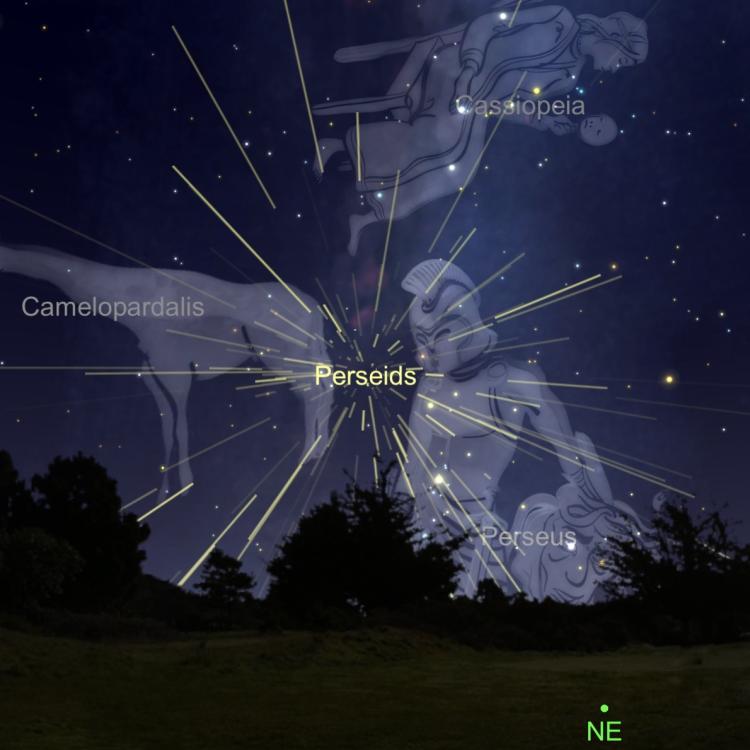 Make sure you catch the Perseid Meteor Shower this year. It peaks on the night of August 12th thru the morning of the 13th. Start watching at 10pm when the constellation Perseus rises over the northeastern horizon.
Make sure you catch the Perseid Meteor Shower this year. It peaks on the night of August 12th thru the morning of the 13th. Start watching at 10pm when the constellation Perseus rises over the northeastern horizon.
The Moon won’t interfere with our view this year, so you’ll be able to catch a dazzling display from dark sky site locations free of light pollution (as many as 1 per minute).
What causes a meteor shower? Sand grain-sized debris were shed by a comet that crossed Earth’s orbit. As our planet crosses that section of our path around the Sun every August, we’re treated to a meteor shower. We only see the bright flash of light which is created by the shock wave in front of the particle as it enters our atmosphere and compresses the air in front of it.
Let us know how many you see!
Also check out an article from Colorado Arts & Sciences Magazine, What to know about the Perseid meteor shower featuring an in depth look at this upcoming celestial event with Tito Salas, Fiske's Operation Manager.
Graphic credit: SkySafari app



